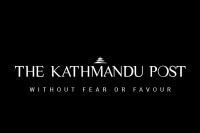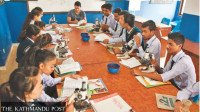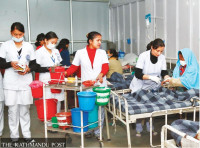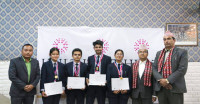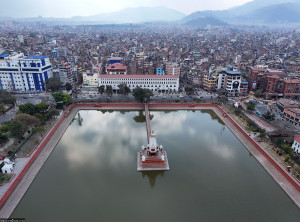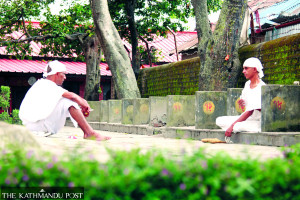Miscellaneous
Let there be sight
I’ve never seen anything like it. The transformations I’ve been witnessing, have stirred me for life, to say the least.A woman’s being able to see once again, after three years of blindness—imagine what that feels like.
I’ve never seen anything like it. The transformations I’ve been witnessing have stirred me for life, to say the least. A woman’s being able to see once again, after three years of blindness—imagine what that feels like. I can never imagine what Aang Derma Sherpa must have felt when she opened her eyes that beautiful morning. She pointed towards the horizon with her eyes, to the meadow and the hills. “Ohho, the trees! Everything’s so clear,” the 71-year-old said. Just the day before, I had seen her fumbling on the stairs up to the attic, to fetch herself a bowl and a thermos to make herself some tsampa. Now, things would change.
“I want to wear new colourful clothes. I can see my grandchildren, meet my friends and go to the market. I want to help my husband in the field and tend to the cattle.”
For hundreds of others that morning in that remote region in Ramechaap, life changed dramatically thanks to ophthalmologist Dr Sanduk Ruit and his dedicated team from the Tilganga Eye Centre. Dr Ruit’s team had performed life-altering operations one after the other, for free, the day before. In the words of the villagers, Ruit was a saviour, helping free them from utter misery and darkness.
Ruitectomy, as it is also known, is a stitch-free, simple surgical technique to cure cataracts. It was pioneered by Dr Ruit, and in its initial days, the procedure was met with massive opposition from the ophthalmology society. “It is quick and inexpensive, and we’ve successfully replicated this technique across the world,” says the doctor, who has led several cataract surgery camps in remote areas of Nepal and abroad, serving tens of thousands of people each year. “I believe sight is a human right.”




 21.63°C Kathmandu
21.63°C Kathmandu
